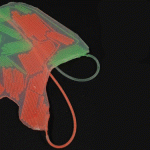Music has the ability to get these pigmented cephalopod cells moving to the beat.
Many cephalopods have the ability to quickly control and change their chromatophores, skin’s pigmented cells, to reflect light. Each chromatophore has tiny muscles that contract to reveal the pigment underneath. The longfin inshore squid, for example, has three different chromatophore colours: brown, red and yellow.
Researchers at the Marine Biological Laboratory in Woods Hole, US, wanted to see if they could control these pigmented cells using electrical stimulation — something similar to Luigi Galvani’s use of lightning to get frog legs twitching in the 1700s.
The researchers attached a suction electrode to the squid’s fin nerve and connected the electrode to an iPod nano, which worked as a stimulator. The iPod plays music by converting digital music into a small current that is sent to magnets in the earphones; these are connected to cones, which vibrate and produce sound. In this experiment, the researchers removed the earbuds and placed the wire into the squid’s fin nerve. When the iPod sent bass frequencies (less than 100Hz), the axons had enough charge to fire an action potential. This caused the muscles in the chromatophores to contract, i.e. change colours.
This video is a view through an 8x microscope zoomed in on the dorsal side of the squid’s fin — and yes, the chromatopheres seem to be dancing.
Source: Backyard Brains






